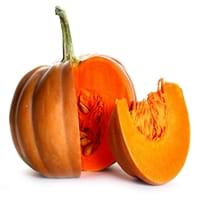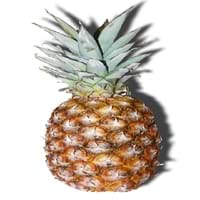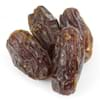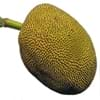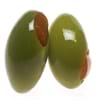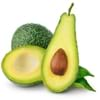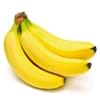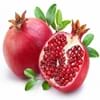Health Benefits
Arthritis treatment, Cancer prevention, High Cholesterol Regulation, Lower blood pressure, Helps Prevent cataract, Prevents gall stones, Ulcer treatment, Weight loss properties
Asthma treatment, Bronchitis treatment, Cancer prevention, Heart care, Increases metabolic rate
General Benefits
Boosts respiratory health, Eliminate parasites and infections, Protects against birth defects, Strengthens bones
Anti-inflammatory properties, Controls blood pressure, Digestive aid, Eye care, Healing of wounds, Maintains healthy cholesterol level, Strengthens bones, Treatment of sinusitis, Treatment of common cold
Skin Benefits
Heals sunburn, Hydrates skin, Skin rejuvenation
Anti-aging benefits, Brightens and lightens complexion, Skin cleansing, Treatment of acne, Treatment of dark spots
Hair Benefits
Regulates hair growth
Prevents hair loss
Allergy Symptoms
Abdominal cramps, Anaphylaxis, Digestive Problems, Dizziness, Eczema, Fainting, Hives, Inflammation, Itching, Tingling sensation in wrist and face, Vomiting, Wheezing
Abdominal pains, Itching in tongue and other parts of mouth, Sneezing, Swelling, Tingling sensation in wrist and face, Vomiting, Wheezing
Side Effects
Kidney and gallbladder diseases
Causes swollen mouth, Allergic reaction, Diarrhoea, Nausea, Skin rash, Vomiting
Best Time to Eat
Along with meal, Don't eat after meal, Morning time (before lunch)
Best if taken as a breakfast (or empty stomach), As a snack in the late afternoon, Eat the fresh ones, avoid mixing with any other foods, don't eat after meal., Morning time (before lunch)
Vitamin B5 (Pantothenic Acid)
Vitamin C (Ascorbic Acid)
Vitamin K (Phyllochinone)
Calories in Fresh Fruit with Peel
Not Available
Calories in Fresh Fruit without Peel
Calories in Frozen Form
Not Available
Calories in Dried Form
Not Available
Type
Berry
Berry, Tropical
Season
All seasons
Autumn
Varieties
Jarrahdale, Peanut, Lakota, Cow, Sugar, Caribean, Red kuri, Buttercup and Pink lady
Smooth Cayenne, Abacaxi, Red Spanish and Queen
Color
Blue, Green, Orange, Red, White
Yellow
Inside Color
Creamy Yellow
Yellow
Taste
Creamy, Soft, Sweet
Strong, Sweet, Tart
Origin
Mexico
Central America, South America
Grows on
Vines
Not Available
Soil Type
Clay loam, Sandy loam, Well-drained
Clay, Sandy loam, Well-drained
Climatic Conditions
Warm to hot climate
Hot, Sunny
Facts about
- The name pumpkin has its roots in the Greek word ‘pepon’, meaning ‘large melon’.
- The largest pumpkin ever grown weighed 1,140 pounds.
- Pumpkins were once known for removing freckles & curing snake bites.
- A single pineapple takes 3 years to reach maturation.
- Pineapple is not an apple, but is actually a berry.
- The name is with reference to its resemblance to pine cones.
- Pineapple is sweeter if scales are more.
Top Producer
China
Costa Rica
Other Countries
Egypt, India, Indonesia, Iran, Italy, Mexico, Russia, Spain, United States of America
Brazil, India, Philippines, Thailand
Top Importer
United States of America
United States of America
Top Exporter
China
Costa Rica
Botanical Name
Cucurbita maxima
Ananas comosus
Synonym
Cucurbita pepo, Squash
Ananas sativus
Subkingdom
Tracheobionta
Tracheobionta
Division
Magnoliophyta
Magnoliophyta
Class
Magnoliopsida
Liliopsida
Subclass
Dillenhidae
Commelinidae
Order
Cucurbitales
Poales
Family
Cucurbitaceae
Bromeliaceae
Species
Cucurbita mixta
A. comosus
Generic Group
Not Available
Pineapple
Difference Between Pumpkin and Pineapple
We might think that Pumpkin and Pineapple are similar with respect to nutritional value and health benefits. But the nutrient content of both fruits is different. Pumpkin and Pineapple Facts such as their taste, shape, color, and size are also distinct. The difference between Pumpkin and Pineapple is explained here.
The amount of calories in 100 gm of fresh Pumpkin and Pineapple with peel is 26.00 kcal and Not Available and the amount of calories without peel is 30.00 kcal and 50.00 kcal respectively. Thus, Pumpkin and Pineapple belong to and category.These fruits might or might not differ with respect to their scientific classification. The order of Pumpkin and Pineapple is Cucurbitales and Poales respectively. Pumpkin belongs to Cucurbitaceae family and Pineapple belongs to Bromeliaceae family. Pumpkin belongs to Cucurbita genus of Cucurbita mixta species and Pineapple belongs to Ananas genus of A. comosus species. Beings plants, both fruits belong to Plantae Kingdom.
